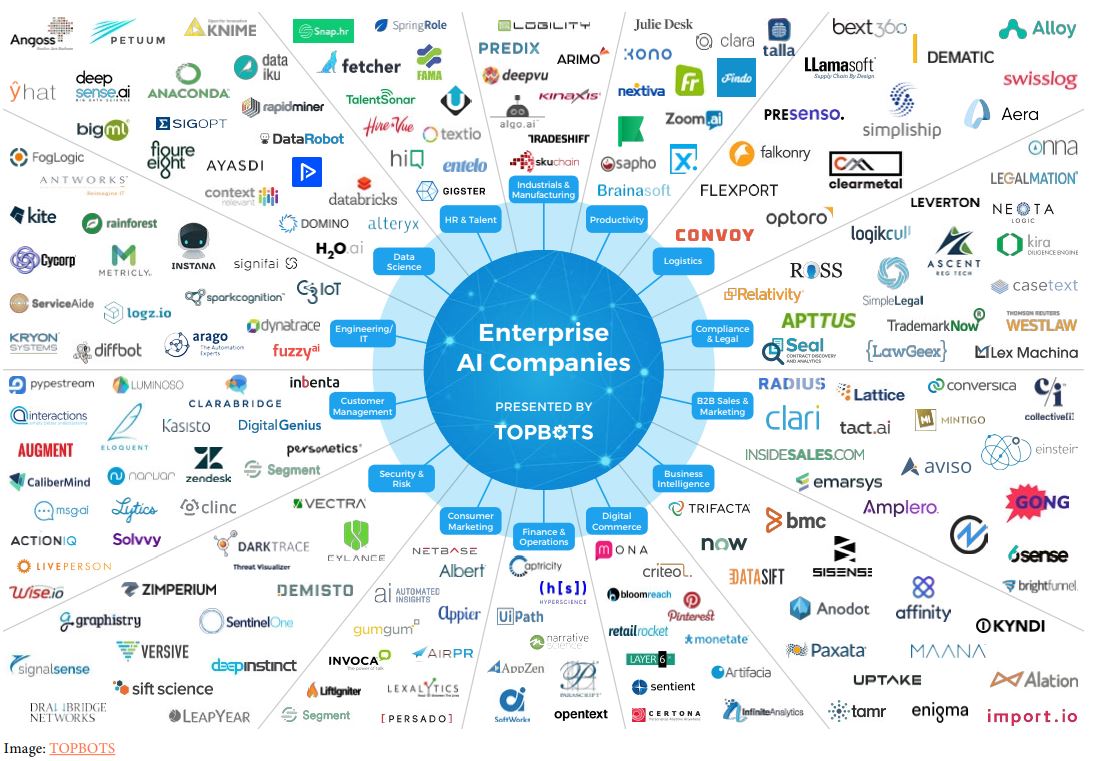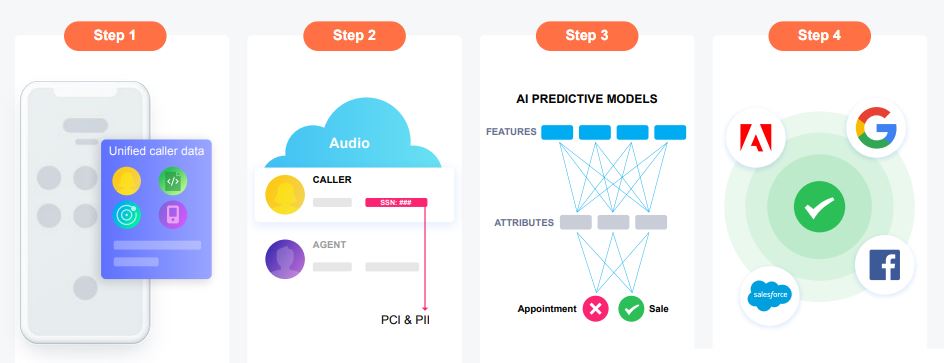Invoca, an AI-powered call tracking platform, published their Call Tracking Study Guide in March of this year. The in-depth guide demystifies call tracking technology and reviews how call tracking tools help marketers connect digital campaign data to inbound customer phone calls.
Call tracking is a powerful way for marketers to understand exactly where phone calls are coming from with granularity that, for the most robust tools, can extend down to the keyword level. This data helps reveal what platforms, publishers, keywords, and channels drive high-intent customers to call and can help marketers create a more informed media allocation strategy.
Content produced in collaboration with Invoca.
Call tracking 101: A brief introduction
Invoca uses a snippet of JavaScript code placed on your website to track calls. After the code snippet is placed on the landing page, it swaps out your standard business phone number with a trackable, dynamic phone number which is unique to each website visitor.
The tag also captures various referrer elements such as utm source, medium, paid search keyword and Google click ID—this is what enables Invoca to connect user data to phone calls.
Example of dynamic tracking phone numbers on a landing page—source: Invoca
When the tracking number is called, the platform can also route the caller to the appropriate person or call center depending on what marketing content they are viewing, reducing time on hold and call transfers. Data is collected based on the specific call number which can include caller information, keyword, referrer type (e.g., banner ad, search ad, or social media ad) and referral source (e.g., Google, Facebook, etc.) which can also be used to inform the call center and create a highly personalized experience for the caller.
Example of referral data info in Invoca
Not all call tracking tools are created equal
There is a large selection of call tracking tools on the market that range from basic to advanced in terms of features and functionality.
Basic tools provide limited data to marketers, but they ignore the larger customer journey and tend to focus on last-touch attribution (e.g., making it difficult or impossible to determine where the call came from).
Some metrics a basic tool might track include:
- Call volume
- Call time and duration
- Caller information
- Basic campaign attribution
These tools provide some sense of campaign performance, but fail to tell the full story that can be gleaned when connecting analytics platforms (e.g. Google Analytics) to call information.
More advanced AI-powered call tracking tools like Invoca aim to bridge that gap, while also automating some marketing actions after the call takes place.
Advanced capabilities that AI-powered call tracking tools provide include:
- Touchpoint attribution—Tie a call back to its source such e.g. paid search or social
- Data unification—Integrate with multiple online (and offline) sources such as CRM tools
- Data analysis—Use AI to analyze phone conversations and provide insight on call drivers, behaviors and outcomes
- Marketing integration—Push data to the marketing stack for automation, optimization, analysis and more
The end result—and key benefit—of implementing an advanced call tracking tool is to gain valuable insight about campaign performance and attribution.
Call tracking 201: AI and machine learning
Martech companies are increasingly powering their technology with AI-driven platforms. AI enables marketers to gain intelligence quickly and make better-informed decisions. This trend bridges multiple industries, as shown in the graphic below.
Companies that utilize or provide AI technology—source: TOPBOTS
Invoca uses Signal AI to help measure and attribute online conversions by mining data from the phone conversations themselves, freeing up valuable time for marketers who no longer have to listen to every call.
Signal AI uses AI to detect intent and patterns in language to provide actionable insights and conversion data (sale made, appointment set, etc.) for marketers. This is accomplished through a series of steps that start with the recorded conversation, transcribing the call into text which can then be analyzed by an algorithm, identifying key patterns, phrases, and actions, and pushing these insights to your marketing stack. Here’s a visual of what that looks like. Note that Invoca does not save call transcripts and is HIPAA and PCI compliant, an important distinction for marketers concerned with data privacy.
Image source: Invoca
Signal AI uses machine learning, an application of AI, which gives machines access to the data so that they can learn from it. AI works in conjunction with machine learning to provide actionable and accessible data to marketers—but marketers still need to review this data and make decisions based on their own observations and conclusions.
Invoca offers two versions of Signal AI to their call tracking clients. Pre-trained AI uses industry-based predictive models that have been “pre-trained” using thousands of hours of call data.
Custom AI is more appropriate for certain businesses, such as those with high volumes of calls or sophisticated data needs. This more complex option takes longer to create and implement, however, it can help certain businesses predict call outcomes with a higher degree of accuracy.
Debunking some common assumptions
Skeptics may think that humans can classify calls more efficiently and accurately than AI, but the truth is the opposite. AI learns over time and it never gets tired, so it’s an effective and accurate way to classify calls without bias. Here are some other call tracking myths, debunked:
- It’s hard to set up AI-based call tracking—Pre-trained AI models take the guesswork out of setup for certain industries such as insurance and can identify the most common outcomes (e.g., product purchased).
- All AI-based call tracking is the same—False! Invoca’s Signal AI uses predictive analytics (rather than just transcription) and continues to learn. It also provides performance scoring for easy reference.
- Only big companies can afford AI-based call tracking—Wrong again. Invoca is tag-based and easy to implement. You don’t need a dedicated IT team or programmer to get up and running.
Clear strategy and clean data
The true power of AI-based call tracking is, in a word, attribution. It’s the ability to unify call data across multiple sources and attribute it to all consumer touchpoints.
Invoca does this by collecting data from multiple sources: campaign and website data, first-party data (e.g., pulled from your CRM), third-party demographic data, call data such as length, time and location of call, and conversational data (derived from speech analysis).
Once all the available data is unified, Invoca’s technology determines the value of the call by analyzing the spoken conversations within the calls. Invoca’s AI synthesizes various word patterns (e.g., “I’m almost ready to buy, but I’m waiting for XYZ to happen”) and then classifies them into useful datasets.
Signal AI helps predict the type of call (e.g., sales, service, complaint) which allows marketers to optimize media placements, ad content, and more. This level of analysis can also help inform the call experience itself by identifying issues that may frustrate callers.
Connecting call data to campaign data can help in other ways too. For example, marketers can use call information for ad suppression, making sure customers don’t see offers for something they’ve already purchased or retargeting ads to people who called but didn’t make a purchase.
Tying it all together
One of the most powerful features of the more robust, high-end call-tracking tools like Invoca is the ability for them to integrate with existing marketing platforms like Google Analytics, Adobe Experience Cloud, and Salesforce.
This gives marketers a clear picture of where their customers are at every step of the journey. It closes the attribution loop, allowing you to demonstrate what’s working from an ROI standpoint, a metric that’s key when it comes time for approval and budget allocation.
When considering implementing a tool like Invoca, the bottom line is always the top priority—will we make money with this martech investment?
Invoca customers have seen up to 60% increase in conversions when implementing the tool (without any additional media spend), an important consideration when factoring in ROI.
The Invoca Call Tracking Guide covers all this including what questions to ask vendors when considering a new tool and what to consider when shopping for a call tracking solution.
To learn more about call tracking technology from functionality to implementation and how call tracking can help with campaign optimization and attribution, download Invoca’s whitepaper, “The Call Tracking Study Guide for Marketers.”
The post Guide to call tracking and the power of AI for analyzing phone data appeared first on Search Engine Watch.
from Search Engine Watch https://ift.tt/2ZePHLN




Comments
Post a Comment